
African Swine Fever China

ASF decimated China’s pork population by 30%-50% in 2019, depending on the informal source consulted (China’s official information on ASF is doubious). As China is the largest pork meat consumer and producer worldwide (by large), the impact of the Swine Flu 2019 was immense.
The USDA estimates that because of the ASF impact in China and other large Asian producers like Philippines and Vietnam, the global pork meat production is expected to be reduced by 7% in 2020.
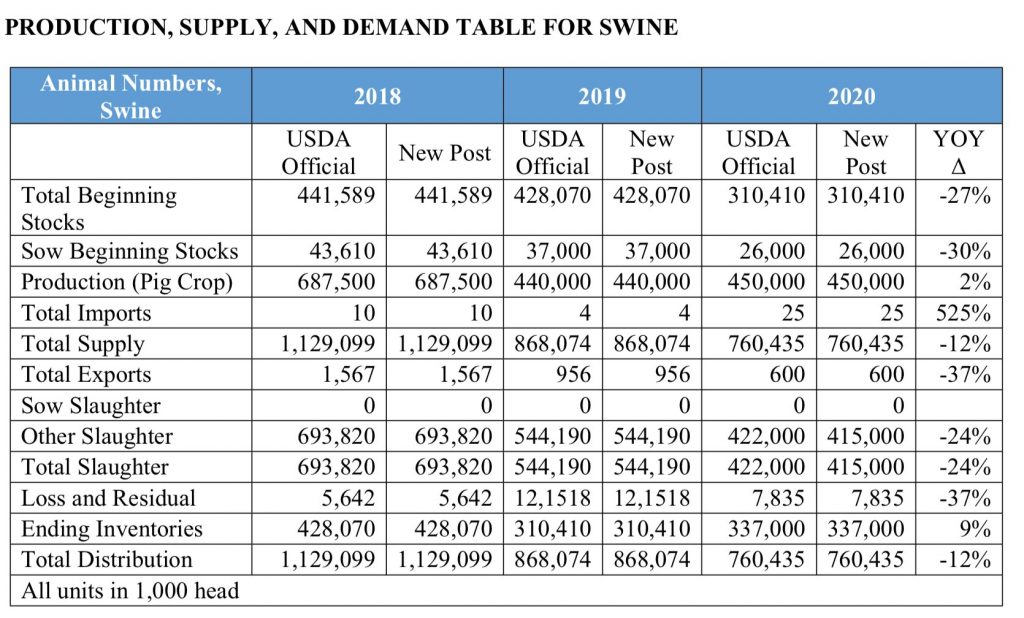
ASF has already decimated China’s swine herds by some 200 – 400 million pigs, an estimated 40-50 percent of all stock. Nobody really know what is China’s total pork herd, but estimations range between 500-700 million pigs pre-ASF.

China consumes 700 million hogs a year, that is a lot of pork meat. Pork meat is a staple in Chinese menus, both at home and restaurants.

ASF outbreaks in China show a declining trend, according to the Chinese government insitutions.
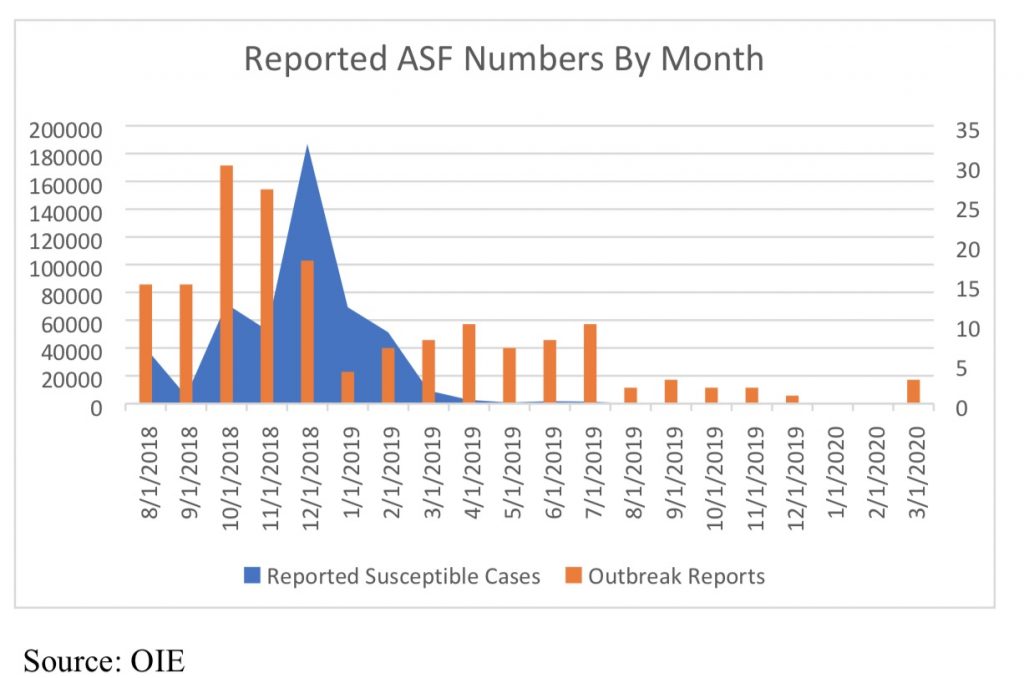
However, the figures cannot be considered reliable, for two reasons:
- A 50% of China’s pork industry is informal. Small farmers do not want to report ASF and see their herds euthanized.
- The Chinese government wants to incentivize the repopulation of piggeries, and do not want to create bad news for a recovering industry
The lack of controls of the informal industry also produces cases because of rampant lack of biosecurity, to the level of butchering and selling illegally ASF infected carcasses. Recent measures tend to increase control on piggeries, and in the sale and transport of pork meat, banning cross-state transportation in some regions of China.
China pork imports due to ASF
As shown in the tables above, the 2020 pork meat imports in China are expected to grow a whooping 525% versus 2019. That is a some 10.5 million tonnes, a 40% of global pork meat exports worldwide.

The US will increase its pork meat exports to China by 860% in 2020! Brazil and Europe will also more than double its pork meat exports to China in 2020.
Despite such a high increase in imports, total pork meat supply (stocks + imports – consumption – exports) in 2020 is estimated to be some 12% smaller than in 2019, and some 33% smaller than the last “normal year”, 2018.
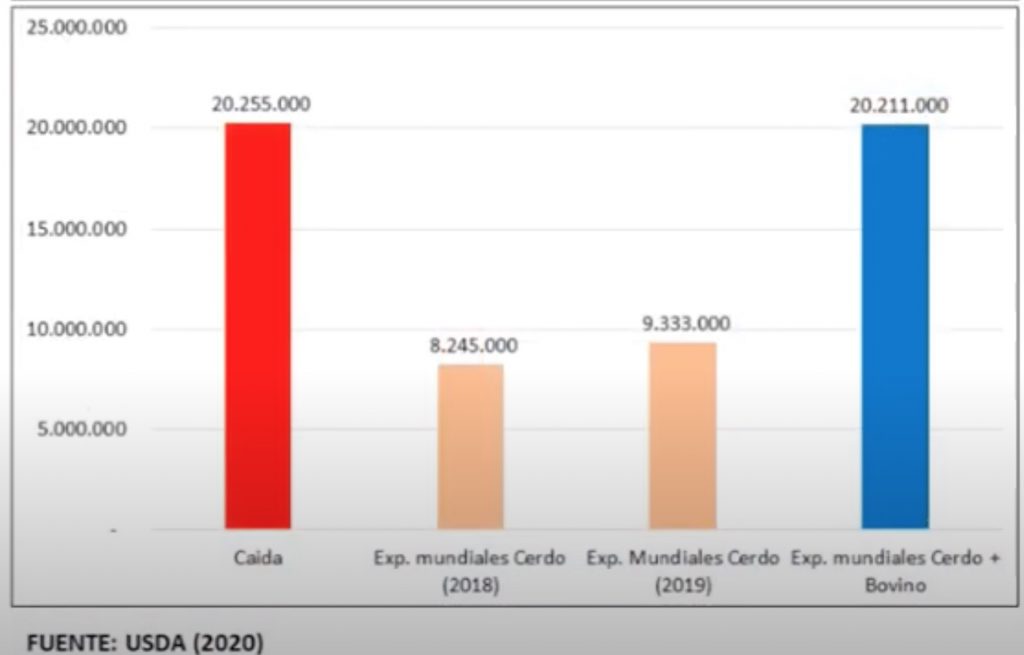
As shown above, the estimated loss of 20.2 million tons of pork meat production due to ASF is the same size of the total beef and pork meat global trade market.
The African Swine Fever had a lot impacts in China, culturally and economically. Although harmless for humans, many Chinese now do not trust anymore on the food safety of pork meat. Also, for those who keep on consuming pork meat, they prefer imported pork from the US, Brazil, Argentina or Europe.
Also, because of the substantial reduction in pork meat available at the Chinese market, pork meat prices skyrocketed in 2019 and continue to be high in 2020. To tackle pork meat shortages and high prices, China is importing over 40-50% more pork than before the ASF outbreak.
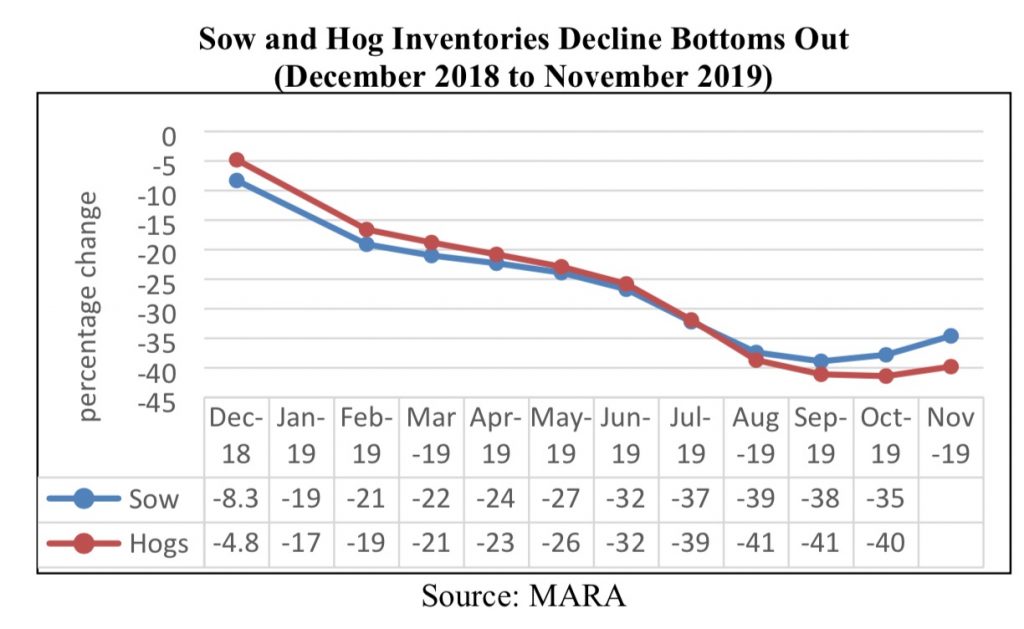
Both the saws and hog inventories are starting to recover in China, and seemed to be bottomed in september-october 2019. However, it is clear that in 2020 and 2021 Chine will continue to import a lot of pork, having lost 30%-40% of the historic stock since 2018.
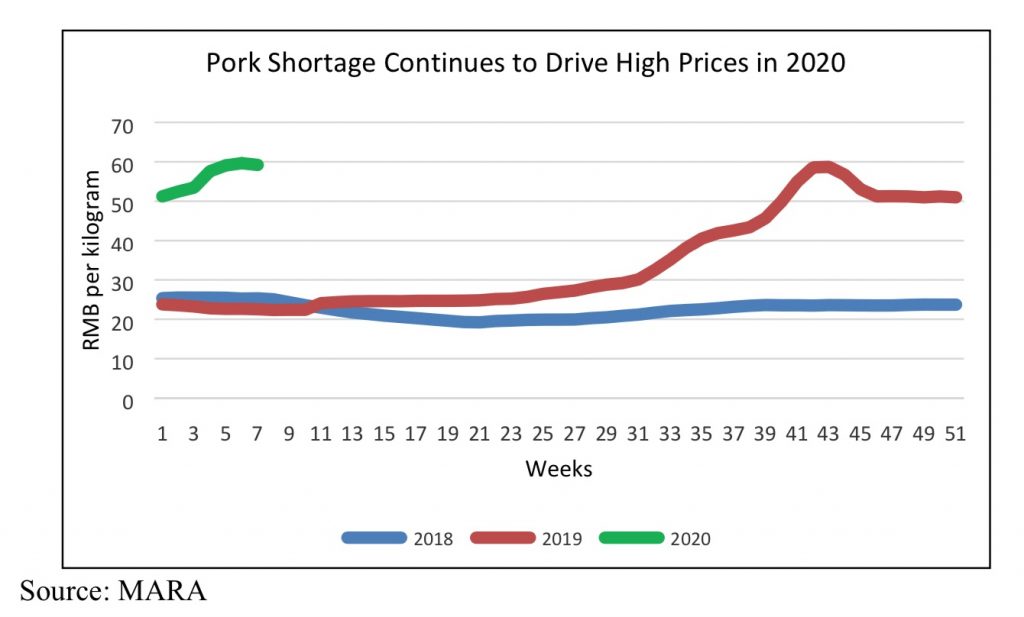
Pork meat price went crazy in China in Q4 2019 and continue to rise in 2020. From an average of 25 yuan per kilo (2.2 Lbs), went to almost 60 yuan per kilo (about US$ 3.9 per lb).
But the scarcity of pork meat also had an impact in substitute meats. China is importing also more beef and more chicken, at higher prices. Controlling animal protein prices has become a state policy for the centralized Chinese Government. For the ruling China Communist Party, increasing and generalizing animal protein consumption was within the social development long term plan. The ASF has put it to a stand still, or at least faced it with a big obstacle to be removed.
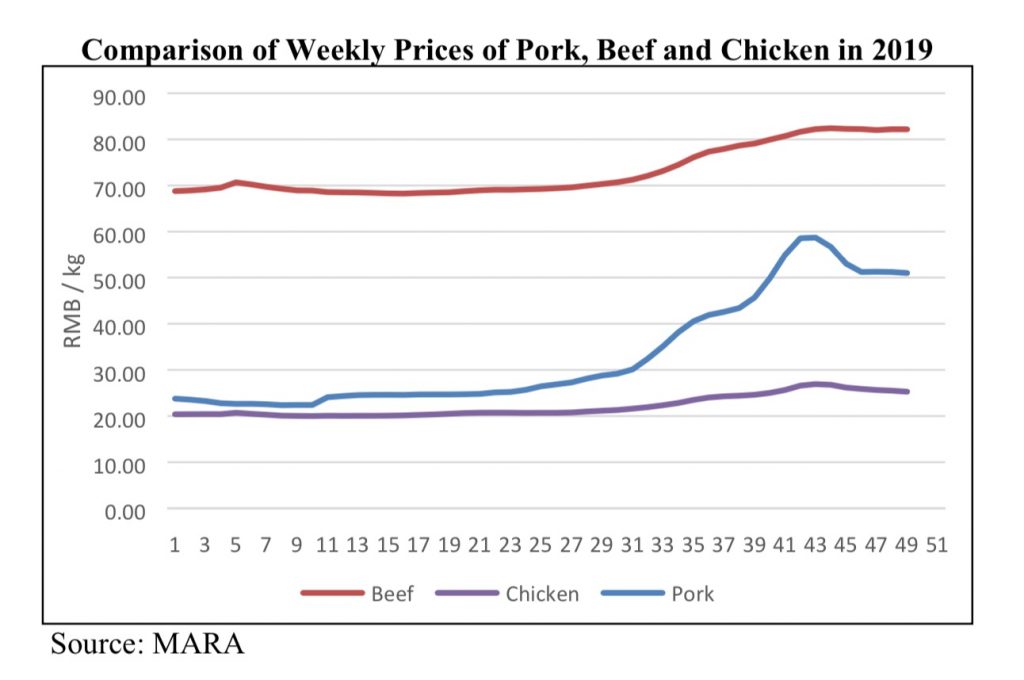
Because of the scarcity of pork, Chinese people increased the consumption of beef and chicken, also pushing up the meat prices.
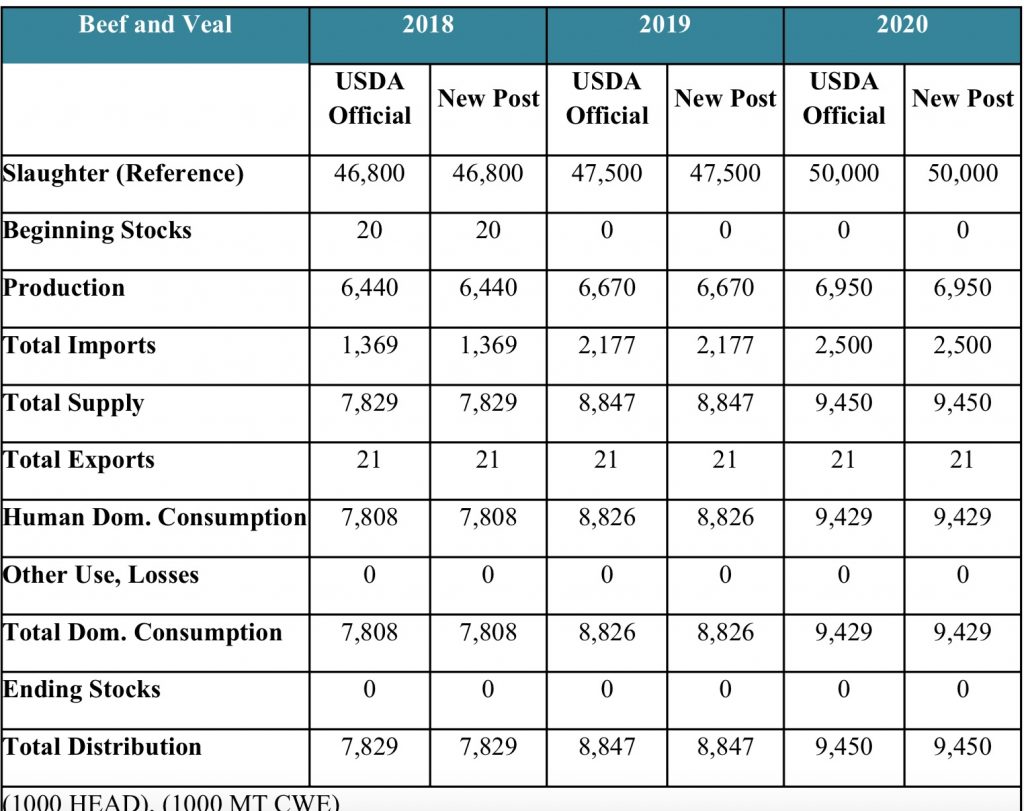
Since Q4 2019 China accelerated the growth of beef imports. In 2020, total beef exports are expected to reach 2.5 million tonnes, an 82% more than in 2018. Brazil, Argentina and Uruguay lead the imports origin as a group, a 65% market share.
There are no certain estimations as per when the China swine herd will recover to normality, pre ASF. Estimates range from one to four or even fiver years. We’ll see.
In 2020, China is still living a pork crisis. China is home to the world’s largest pork meat market and hog population.
ASF has impacted China since August 2018. An estimated 200 – 400 million pigs have died or were stamped out.
The Chinese government has been desperate to stabilize pork prices. But opening of imports, mostly from the US, Europe and Brazil and releasing 22,000 tons of meat from his strategic pork meat food security since September 2019 have not stopped pork meat prices to raise.
The wholesale market cost of a single kilogram of pork was 45 yuan in January 2020, more than double the 19 yan consumers paid around the same time last year.
The lack of pork meat has only partially been compensated by the import of other meats, in addition to pork. Last year, Chinese imports of beef grown considerably, as well as poultry.
In addition to internal problems swine flu causes in China, the nasty epidemic pressed to neighboring countries such as Japan and South Korea, and more recently, India.